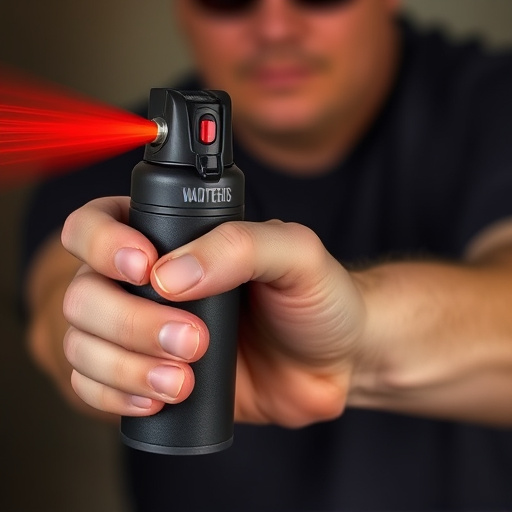When choosing between bear spray and personal pepper spray, consider their distinct applications: bear spray for long-range deterrence against aggressive bears, and personal pepper spray for close-quarters self-defense against humans. Bear spray has a wider range and longer duration, while personal pepper spray offers quicker, more targeted protection with easier application against human threats. The choice depends on your primary need: wildlife deterrence or personal safety during close encounters.
- Understanding Riot Control and its Tools
- Bear Spray: A Natural Deterrent
- Personal Pepper Spray: The Synthetic Solution
- Key Differences Between Bear and Pepper Spray
- Choosing the Right Self-Defense Tool
Understanding Riot Control and its Tools
Bear Spray: A Natural Deterrent
Personal Pepper Spray: The Synthetic Solution
Personal pepper spray has emerged as a powerful tool for self-defense, often preferred over bear spray due to its specific design and effects. While both serve as inflammatory sprays, they target different purposes and user needs. Bear spray, formulated with capsaicin, is designed to deter aggressive bears by irritating their eyes and sensory organs, allowing the individual time to escape. In contrast, personal pepper spray contains a synthetic form of capsaicin tailored for human self-defense scenarios.
The advantage of personal pepper spray lies in its accuracy and immediate impact. It’s typically delivered through a small, handheld canister designed for ease of use, enabling individuals to target specific areas like eyes, face, or respiratory system. This precision makes it highly effective against potential assailants without causing long-term harm, unlike bear spray which can have more widespread effects.
Key Differences Between Bear and Pepper Spray
Bear spray and personal pepper spray are both riot control agents, but they serve distinct purposes. Bear spray is designed to deter aggressive bears, using a combination of capsaicin (the active ingredient in chili peppers) and other irritants to temporarily blind and disorient the target animal, giving the user precious time to escape. On the other hand, personal pepper spray is tailored for self-defense against humans. It delivers a high concentration of capsaicin directly into the eyes and respiratory system, causing temporary blindness, coughing, and difficulty breathing, allowing the user to flee or disable their assailant.
While both types contain capsaicin, bear spray has a larger range and longer lasting effect, designed to deter large, powerful animals. Personal pepper spray, however, offers a quicker and more targeted response for human threats, with a shorter range but still potent enough to disrupt an attacker’s senses and create an escape opportunity for the user. Choosing between them depends on the specific threat: bear spray for wildlife encounters and personal pepper spray for self-defense scenarios.
Choosing the Right Self-Defense Tool
When it comes to self-defense in high-pressure situations like riots, understanding your options is crucial. Both bear spray and personal pepper spray offer effective deterrents, but they differ significantly in origin, strength, and application. While bear spray utilizes natural components for a wider range of targets, personal pepper spray provides a synthetic, targeted solution. In the debate of bear spray vs personal pepper spray, the choice depends on your specific needs and environment. For a more natural approach, bear spray may be the better option; however, pepper spray’s precision makes it ideal for controlled self-defense scenarios. Ultimately, ensuring you’re prepared with the right tool can make all the difference in potentially dangerous situations.
